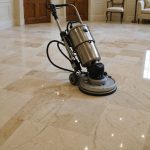Essential steps and considerations for air source heat pump installation in Orpington
When planning air source heat pump installation in Orpington, understanding the main requirements and careful preparation can simplify the process. As outlined on the Air To Heat install air source heat pumps page, successful installation starts with checking that your property meets the basic prerequisites: sufficient outdoor space (at least 1 meter of clearance around the unit), strong home insulation (typically 270mm loft insulation and cavity wall fill), adequate indoor area for a hot water tank, and a reliable electrical setup. If your home is listed or located in a conservation area, you may also need permits. Most properties do not require planning permission, but installation must comply with local building regulations.
In parallel : Air duct cleaning uk: improve air quality and efficiency
The installation timeline ranges from 2 to 5 days, depending on how complex your current system is and whether any heating or pipework upgrades are needed. Homeowners should prepare for some disruption: installers might need to remove the old system, add pipework, drill walls, or temporarily lift floorboards. Heating and hot water may be offline for a day or two, but professional teams work efficiently to limit downtime and ensure all connections are completed to the highest standard.
Costs for air source heat pump setup in Orpington typically fall between £5,000 and £15,000+, with averages from £7,000 to £11,000. Government grants—such as the Boiler Upgrade Scheme with up to £7,500 available—make these systems more accessible. Factors influencing cost include the scale of the installation (residential or commercial), home energy upgrades, and equipment quality. Experts recommend homeowners choose certified installers accredited by the Microgeneration Certification Scheme (MCS) or TrustMark.
Also read : Elevate your comfort: heating and plumbing in Reigate
Attempting DIY installation can lead to safety risks, voided warranties, and ineligibility for grants. Instead, engage accredited professionals whose expertise covers not just fitting the system, but also compliance checks, electrical certification, and post-installation support. Comparing local installer quotes and checking qualifications helps you secure reliable workmanship and ensures the installation will maximize energy savings and longevity.
The complete air source heat pump installation process in detail
Pre-installation site assessment, compliance, and system design
A qualified installer begins every step-by-step installation guide with a thorough pre-installation site assessment. This evaluation ensures air source heat pump setup will comply with local planning and building regulations compliance. Installers measure available space, assess insulation levels, and verify heat pump clearance regulations—typically, at least one metre around the outdoor unit is required. Heat pump location guidelines are checked to avoid noise issues and maintain optimal performance. The installer then calculates heat pump sizing and capacity using proven methods or dedicated sizing calculators. System design considers whether air-to-water vs air-to-air installation differences are relevant for the property.
Removal of existing systems and preparation of site
Preparation may involve removal of existing heating systems, like old boilers or redundant pipework. During this stage, installers carry out any essential upgrades, such as improving insulation or resizing radiators, to maximize heat pump efficiency optimization. Appropriate floor or wall surfaces are prepared to meet installation requirements and to comply with required installation permits and approvals.
Installation of outdoor and indoor units, integration with existing heating
Installation specialists follow air source heat pump setup plans carefully. The outdoor unit is placed according to heat pump location guidelines and heat pump clearance regulations. Indoor components—typically a hot water tank and control systems—are sited as per the step-by-step installation guide. If integrating with an existing heating system, heat pump system design ensures compatibility and avoids heat loss or inefficiencies, a key aspect of heat pump efficiency optimization. Integration details depend on air-to-water vs air-to-air installation differences, as distribution components vary.
Selecting installers, managing costs, and post-installation best practices
How to choose a qualified, accredited installer and verify experience
For a hassle-free air source heat pump setup, start by identifying MCS-certified installers. This accreditation ensures installers meet strict quality and safety measures. Verifying heat pump installer qualifications is vital—not just for professional expertise but for eligibility for government grants and incentives. Search trusted directories using “finding qualified installers near me.” Compare experience, recent heat pump installation projects, and installer certification status. A strong track record with the installation certification process signals quality and accountability.
Accessing grants and minimising costs through quotes and local incentives
Obtain multiple quotes to compare installation cost factors and regional installation cost variations. Certified installers ensure eligibility for schemes like the Boiler Upgrade Scheme, which may contribute up to £7,500 towards your air source heat pump setup. Factoring in these government grants and incentives could significantly reduce average installation cost. Discuss potential installation cost savings and ensure every quote details site-specific requirements.
Maintenance routines, servicing, warranties, and long-term savings
Once installation is complete, regular post-installation maintenance keeps your system efficient. Adhere to manufacturer servicing schedules—usually annually—and check the heat pump warranty and servicing conditions for coverage on repairs. Simple tasks, like keeping the outdoor unit clear and replacing indoor filters, extend system life and reduce overall running costs, furthering your heat pump energy savings estimates.











